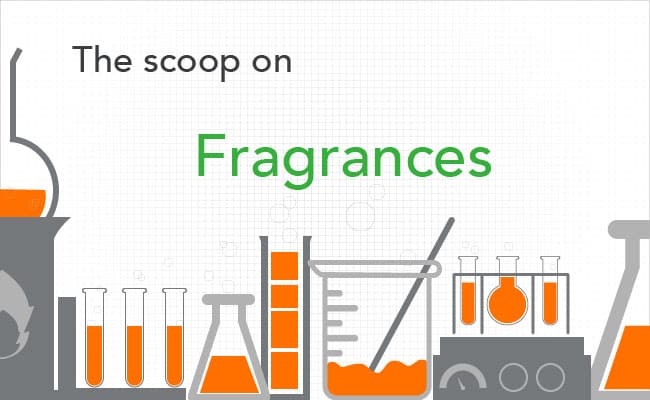What is “fragrance”?
Fragrances are added to virtually everything from cleaning products to perfume to toothpaste and even orange juice. But fragrance isn’t just one thing, but rather a long list of ingredients that manufacturers aren’t required to disclose to the public. Fragrances are used to enhance a consumer’s sensory experience of a product.
What products are fragrances in?
Fragrance may be added to almost any product you can think of including incense, candles, perfumes, toys, and personal care products. The real question is, what’s in the fragrance? Some of the toxic chemicals that are commonly included in the toxic brew include phthalates, formaldehyde, p-dichlorobenzene, and petroleum distillates.
How to tell if a product has fragrances
Products typically will list one word, “fragrance” on a product label. The problem is that it’s nearly impossible to know the ingredients that actually make up a fragrance, because the one word “fragrance” can actually hide more than 100 different chemicals. Unfortunately the fragrance industry is primarily self-regulated, where safety testing does not have to precede product sales and fragrance cocktails don’t even have to be reviewed by regulatory agencies. Fragrances are considered trade secrets, meaning that manufacturers aren’t required to disclose the potentially hundreds of ingredients hiding behind the one word “fragrance”.
Fragrances commonly contain phthalates, which are used to help the scents last longer. Studies have shown that more than 75% of products with fragrances contain these hormone disruptors. The CDC reported that phthalates can be found in the blood of most Americans, and the greatest quantities are in women. They can act like hormones in the human body, which can cause a wide range of health risks. Health risks for phthalates are startling and include cancer, human reproductive and developmental toxicity, endocrine disruption, birth defects & respiratory problems
Risks associated with fragrances:
Did you know that fragrance chemicals can pass through the skin and enter the blood stream? They are often manufactured from petroleum and coal tar and are classified as carcinogens, hormone disruptors, neurotoxins, skin and respiratory irritants. Plus, many “natural” fragrance ingredients are as dangerous as the synthetic ones. Fragrance chemicals have been known to cause all kinds of nasty problems which is why the U.S. Centers for Disease Control and Prevention follow a fragrance-free policy in the work-place.
How to avoid fragrances
The Environmental Working Group advises that consumers read the word “fragrance” or “parfum” and translate it to mean “hidden chemicals”. Always choose fragrance-free products but be aware that the word “unscented” does not mean that fragrances have not been added. Manufacturers often add fragrance chemicals to cover other smells and achieve neutrality. Also watch out for products labeled with “natural fragrance,” because there is no standard criteria for what constitutes a “natural fragrance”.
In cleaning products, where manufacturers aren’t required to list all their ingredients on product labels, choose toxic chemical free alternatives with safe natural ingredients. Also remember that there are no federal criteria dictating standards for what makes something a “natural” cleaner, so avoid cleaners with fragrances.
Additional References:
Healthy Child Healthy World: What you need to know about fragrance—A trade secret with not-so-secret health implications.
Healthy Child Healthy World: Freshen Indoor Air Naturally.
CDC: US Centers for Disease Control Follow Fragrance-Free Policy.
EWG: What is fragrance?




